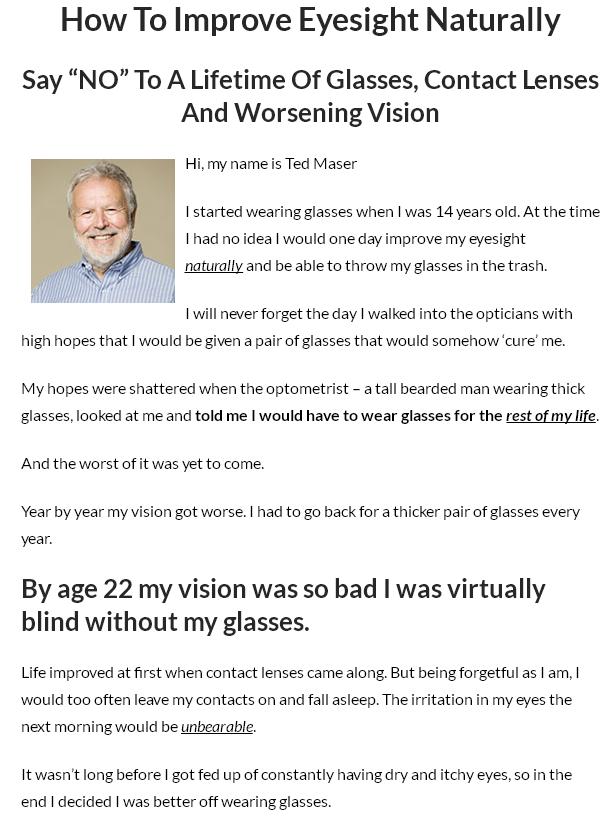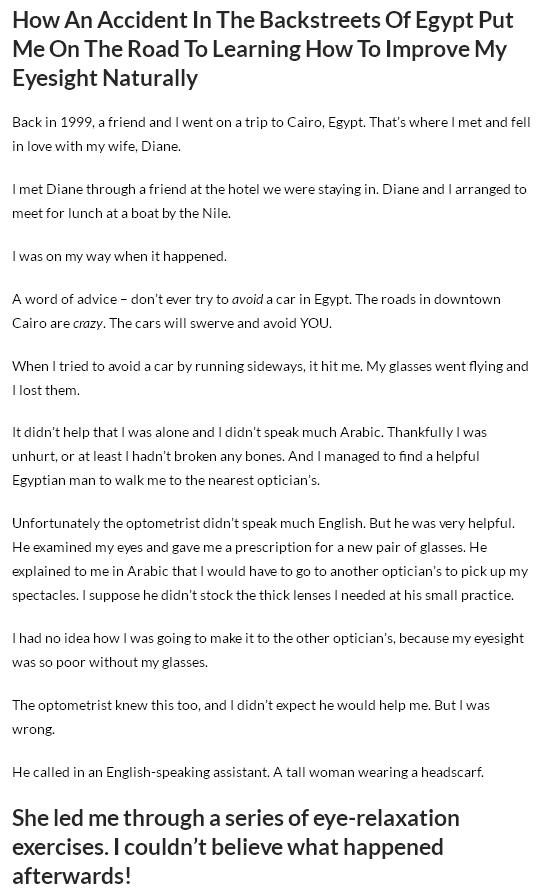History of Ortho-K
Orthokeratology is known by numerous names and the technique has change greatly over the years. Various forms of Ortho-K have been practiced for about 40 years. The technique first involved using progressively flatter lenses to flatten the cornea causing the patient to become less nearsighted. This early method required months to show results and the patients had to wear their lenses during part of each day or wore them on alternating days.
Corneal Molding has evolved into a method where over 80% of patients achieve success with the first lens. Good results typically take less than a week. The process is accomplished while you sleep using a computer designed reverse geometry contact lens. The lenses, also known as vision retainers, are inserted at bedtime and removed in the morning. The lenses safely and gently reshape the cornea changing the eye’s focus. Most patients will have good vision throughout the day. Some patients may only need to wear their lenses on alternate nights to maintain good vision.
Preventing the Progression of Nearsightedness in Children
Numerous recent studies have shown that orthokeratology lenses can prevent the progression of myopia (nearsightedness) in children. Currently, a multi-center FDA sponsored study is in it’s second of five years and thus far the preliminary results are confirming the results of earlier studies.
How Does Orthokeratology Work
Orthokeratology is accomplished by using a specially designed contact lens called a reverse geometry lens that gently flattens the cornea by pushing the central epithelial layers that reside directly over the pupil towards the periphery. This movement of corneal cells causes the center of the cornea to be thinner thus moving the focus of light closer to the retina. Orthokeratology refocuses the light on the retina in the same way as LASIK and PRK.
FDA Certified Training Required of Eye Doctors to fit Overnight Orthokeratology Lenses
The traditional methods of fitting the reverse geometry lenses used in modern Ortho-K do not follow traditional contact lens fitting methods. Because of this difference the FDA restricts the use of these lenses to only those doctors that have been specially trained in their use. This is an additional requirement that has never been used for contact lenses, however, it is much like the requirement for the additional training required of physicians that use the excimer laser for LASIK and PRK.
This special provision has never been used for contact lenses, although it has been used for other ophthalmic devices such as excimer lasers for refractive surgery procedures.
Overnight Orthokeratology is FDA Approved
Only a handful of orthokeratology lenses have been approved for overnight orthokeratology. Most notably a series of lenses from Baush & Lomb that employ the Vision Shaping Treatment such as the DreamLens and the Paragon CRT Lens (Corneal Refractive Therapy) from Paragon Systems.
What are My Refractive Options
Expect your eye doctor to consult with you regarding the wide range of options that area available to you. He or she will help you focus on which option or options best fulfill your visual needs.
Glasses
This is the most common, safest and simplest option and gives patients excellent, consistent vision. In addition, all contact lens wearers should have a pair of glasses that they can fall back on when they can’t or should not be wearing their contact lenses.
Traditional Contact Lenses
Traditional contact lenses provide a number of options with variable replacement schedules from soft contact lenses that are discarded daily, every two weeks or monthly. There are also contact lenses that can be safely worn overnight from 6 nights to as many as 30 consecutive nights. Studies have shown that contact lens wear even considering a lifetime of wear, is safer than refractive surgery. Both soft and gas permeable lenses can correct high amounts of nearsightedness, astigmatism and farsightedness. Contact lenses can also correct presbyopia, allowing patients over 40 to see at both near and far without bifocal glasses or reading glasses.
Refractive surgery
Refractive surgery is a very popular option for reducing a patient’s dependency on glasses, however, not everyone is a candidate for refractive surgery. The most popular refractive procedure is LASIK or Laser ASsisted In situ Keratomileusis, however, PRK or Photo Refractive Keratectomy is still very popular. Non laser refractive surgeries such as a Clear or Refractive Lensectomy and Implantable Contact Lenses are also available, however they are not nearly as popular as LASIK and PRK. There are a number of reasons why a person may not be a candidate for LASIK or PRK.
Why Not Have LASIK
The most common contraindications to refractive surgery are large pupil size, thin corneas, occupation, refractive error, surgical expectations and age. In addition, some patients simply are not comfortable with having surgery on their eyes or are hesitant to undertake something such as LASIK or PRK that is permanent.
What Should I Expect
Patients interested in Ortho-K start with either an eye exam or an Ortho-K Screening. After a comprehensive eye exam, including an Ortho-K consultation, corneal topography is done. These are topographical maps of the cornea. Everyone’s corneal topography is different, much like our fingerprints.
Corneal topography shows us irregularities in the cornea and is essential to designing contact lenses that will mold your cornea. Corneal topography also allows us to diagnose corneal diseases such as keratoconus. Specular microscopy is also performed which allows us to see that the corneal cells are healthy.
The corneal topography data is then used with the refractive data to design a gas permeable contact lens that will flatten the cornea, resulting in clear vision.
When we receive your contact lenses we verify the lens order and call you to schedule a time to dispense you contacts and teach you how to insert, remove and care for them.
When you pick up the lenses your doctor will verify that they fit as expected and determine when you will be seen next.
Most patients wear their lenses at night, while sleeping, and remove them in the morning. Some patients wear them every night and some wear them every other night.
ฉ 2010 Dr. Richard A. Driscoll



